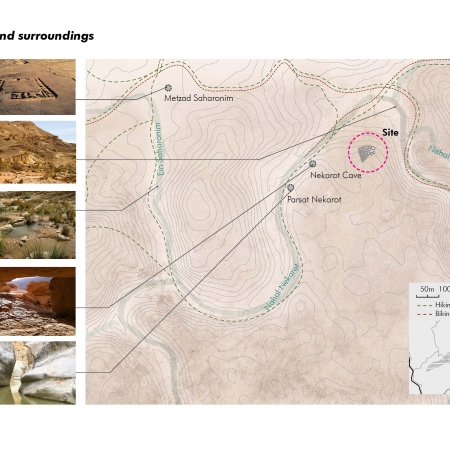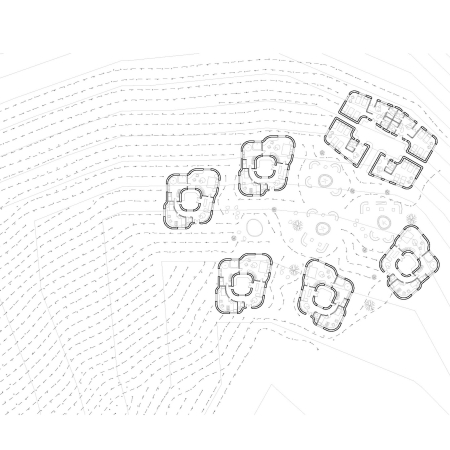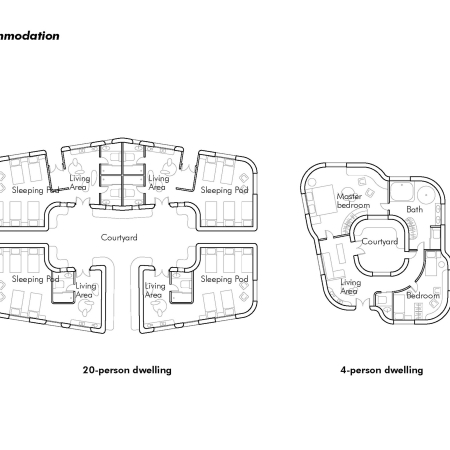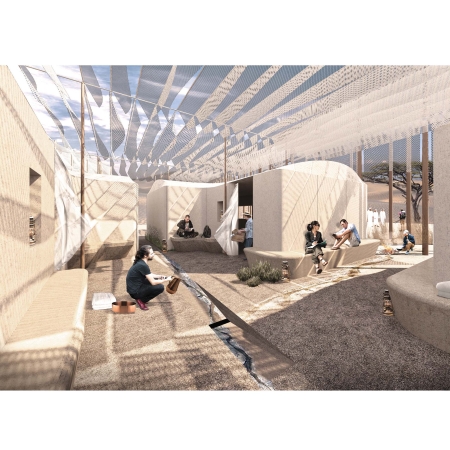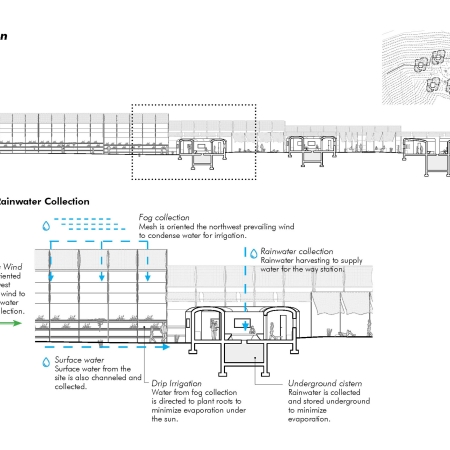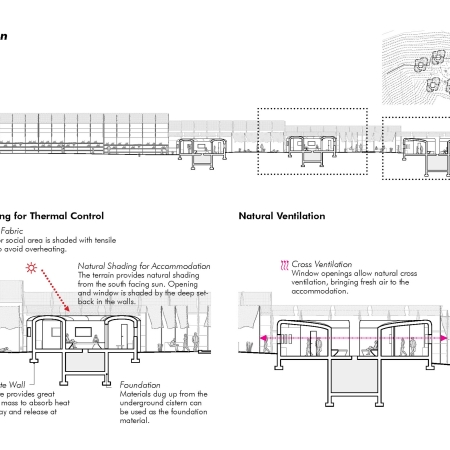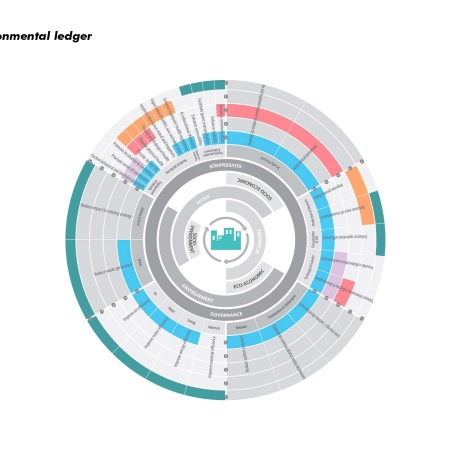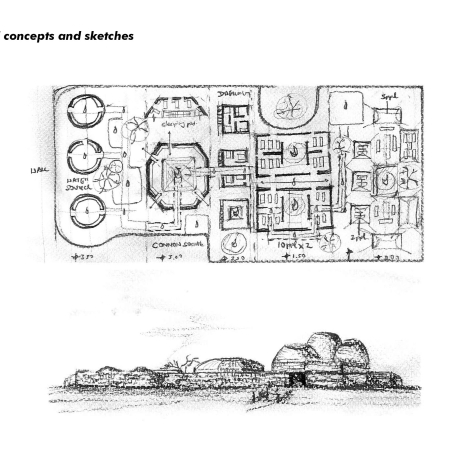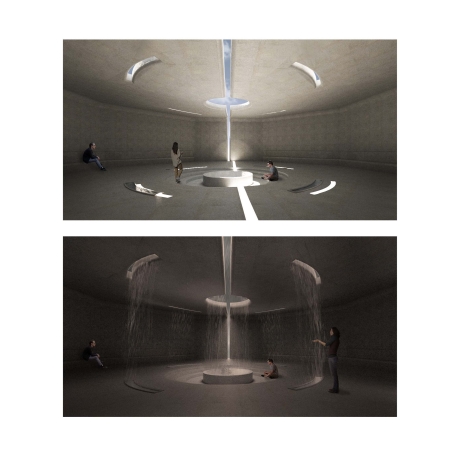Students: Sharon Kwan and Matt Lee
Instructor: Howard Davies
M1 - Winter 2020
The concept of squat stems from the action of occupying an abandoned or unoccupied area of land. It largely refers to informal settlements around the world where communities are formulate organically for survival. Our site sets next to the Nahal Nekarot, a river in the Mektash Ramon. It is a sloped site with relatively flat land for easy construction. It is located next to a hiking trail and so it can be accessed by foot. This eco-squat provide temporary accommodation spaces for hikers and environmentalist who seek to connect with nature in the wilderness.
Firstly, we take on the idea of squat in providing refuge to strangers. We provide accommodation up to 40 visitors at maximum capacity. Water, public spaces, vegetation are shared among the inhabitants of the eco-squat. There are two type of dwellings. There are five single-family houses for 4 persons, and one 20 persons dormitory. At the entry of domestic complexes, seatings are arranged around the courtyard for outdoor cleansing after a long day in the desert. Bathrooms with higher privacy are located close to the entry for individual cleansing. We envision inhabitants using their individual internal courtyard as a spill over from the internal living space. Hence, the orientation of the buildings are arranged with long axis facing north so that the southern high ground shades the building mass from the harsh sun. This arrangement allow micro-climate in the internal courtyard to provide major social area for washing and practice traditional cooking in sand or using camp fires.
Secondly, the built form’s long-side is aligned with prevailing winds from Northwest to facilitate cross ventilation. The building envelope responds to the building orientation, where the short facades equipped with operable windows and vents. The communal place is shaded by the tent structure for meet and greet. The accommodation space is oriented along the topography lines and views are directed towards the distinct landscape of Nahal Nekarot. The opening of the living area is shaded by a deep set back in the wall. Utilizing solar heat gain, the thermal mass of concrete wall absorbs the heat from the day and release it at night.
Furthermore, we attempt to achieve resilience by harvesting the readily available resources on site. We integrated a fog collection system in our master layout plan. Fog collection uses vertical mesh net to make the fog-droplets flow down. The collector is made up of three major parts: the frame, the mesh netting, and the trough or basin. Through condensation, atmospheric water vapour from the air condenses on cold surfaces into droplets of dew. Fog contains typically from 0.05 to 0.5 grams of water per cubic meter, with droplets from 1 to 40 micrometres in diameter. It settles slowly and is carried by wind. Thus, fog fence must be placed facing the prevailing winds with fine mesh, as wind would flow around a solid wall and take the fog with it. Channels and water path direct the surface run off to an underground cistern. Rainwater collection, on the other hand, complement the water system in the courtyards of each building secure the fresh water supply. The pairing of fog and rainwater collection is the self-sufficient system that would distribute the water to the rest of the compound by gravity without water pump.
Lastly, the two components of building fabrication adapt innovative environmentally-friendly technologies. The walls are built using 3D printing with sand structure and the roof is prefabricated and transported on site. We propose to apply massive 3D printed sand structure for modularization of building elements because this innovation allow the thermal mass keep the wall in shade ideal for hot climates with extreme temperature shifts.
